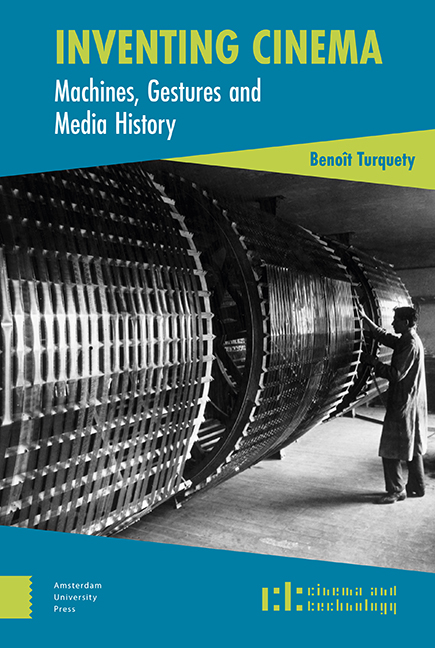Book contents
- Frontmatter
- Dedication
- Contents
- Acknowledgements
- Introduction: The Problems of Digital Cinema
- 1 The Why and How of Machines
- 2 Invention, Innovation, History
- 3 The Invention of the Problem
- 4 The Invention of the Cinématographe
- 5 ‘Natural Colour Kinematography’, a New Cinema Invention : Kinemacolor, Technical Network and Commercial Policies
- 6 Epilogue: From the Trembling of Film to the Stability of the Digital
- Bibliography
- Index
2 - Invention, Innovation, History
Published online by Cambridge University Press: 21 November 2020
- Frontmatter
- Dedication
- Contents
- Acknowledgements
- Introduction: The Problems of Digital Cinema
- 1 The Why and How of Machines
- 2 Invention, Innovation, History
- 3 The Invention of the Problem
- 4 The Invention of the Cinématographe
- 5 ‘Natural Colour Kinematography’, a New Cinema Invention : Kinemacolor, Technical Network and Commercial Policies
- 6 Epilogue: From the Trembling of Film to the Stability of the Digital
- Bibliography
- Index
Summary
Abstract
The terms ‘technological invention’ and ‘technological innovation’ pose a dual problem from the outset: that of defining an invention and an innovation, and that of defining the technological. This twofold problem, at once historiographical and theoretical, raises another in passing: does this question have any specific aspect in the case of technological innovation in the cinema? Or, what is yet another problem: does this question have any specific epistemological aspect in the case of film history and theory? Elements from the history of the viewfinder or of editing show the importance of an epistemology of machines. The approach is developed through a detailed analysis of Wheatstone's stereoscope.
Keywords: Innovation, invention, historiography, viewfinders, editing, stereoscope.
The terms ‘technological invention’ and ‘technological innovation’ pose a dual problem from the outset: that of defining an invention and an innovation, and that of defining the technological. This two-fold problem, at once historiographical and theoretical, raises another in passing: does this question have any specific aspect in the case of technological innovation in the cinema? Or yet another problem: does this question have any specific epistemological aspect in the case of film history and theory?
Innovation in Cinema and the Film Spectator
Technological discourses on the film medium have largely been built on a now-classical schema connecting a very limited number of invariable fundamental moments: the emergence of the base dispositif, the arrival of sound and colour, and then that of a few other less crucial or partially futuristic elements: widescreen cinema, special dispositifs (Imax, Showscan, etc.), 3D cinema. This segmentation structures both Jean Vivie's Historique et développement de la technique cinématographique (1946) and Steve Neale's essay Cinema and Technology: Image, Sound, Colour (1985), to take two classic examples. The division volumes such as these establish is undoubtedly intended to be historical, involving a more or less precise periodization, but it also has a strong theoretical aspect, or rather it is manifestly organized according to a strong theoretical conception of the medium: cinema is moving photographic images, with the addition of the supplements sound and colour. We might ascribe to these supplements a theoretical value of increased realism (the drive towards ‘total cinema’) or power of attraction; nevertheless, they remain supplements, and adding or subtracting them does not dent the medium's fundamental integrity.
- Type
- Chapter
- Information
- Inventing CinemaMachines, Gestures and Media History, pp. 75 - 102Publisher: Amsterdam University PressPrint publication year: 2019



